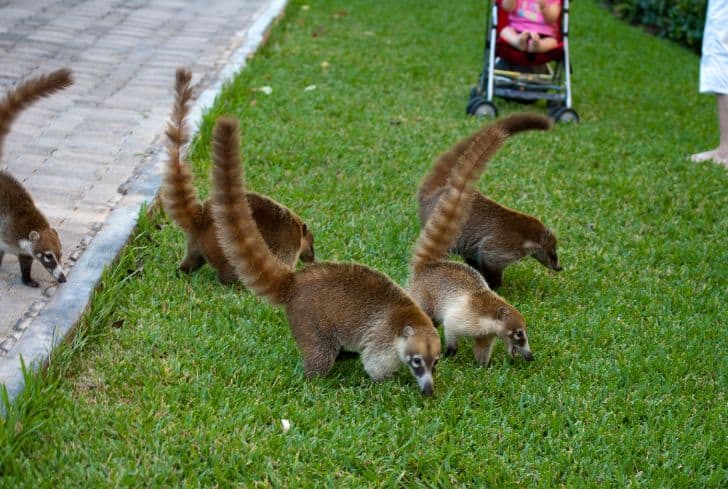17 Animals With REALLY Long Names (With Pics)

Has your curiosity as an animal lover propelled you to want to learn about 17 animals with long names? We’ve got all the information you need regarding the naming of these fascinating creatures.
Some of these animals get their names from their origin, behavior, and appearance, and others according to how scientists view them (I’m looking at you, Pleasing fungus beetle).
And to give you a glimpse, these animals range from reptiles to insects to fish.
Without further ado, let’s dive in.
17 Amazing Animals With Really Long Names
1. Screaming Hairy Armadillo (Chaetophractus vellerosus)
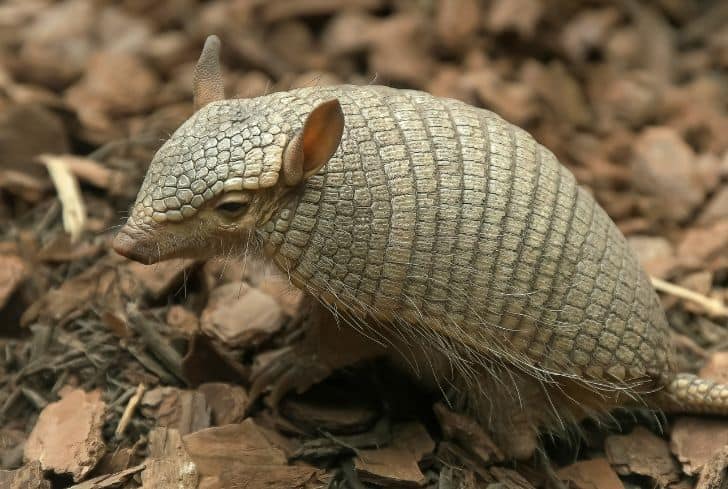
The small and slender Screaming Hairy Armadillo is a burrowing mammal native to arid areas of South American countries, including Bolivia, Paraguay, and Argentina.
When threatened, the armadillos produce loud squeals to ward off their predators. That’s the reason behind the first word of their name.
And as one of their distinct features, the small mammals have hairs that cover their entire underparts and legs, and in some cases, it protrudes between the scutes. That explains the second word in their name.
Fun fact; the screaming hairy armadillos consume large amounts of sand while foraging, which sometimes makes up about 50% of their stomach contents!
2. Ruby-throated Hummingbird (Archilochus colubris)

The Ruby-throated hummingbird is small and the most common in East Mississippi. You can find it in various habitats, including woodlands, open grasslands, meadows, and forest edges.
Male and female Ruby-throated hummingbirds are golden-green or bright emerald on the back, while the underparts are usually gray-white.
But the males have more color patterns, and it’s how the birds get their name. Their throats are brilliant ruby when in good light but turn dark in poor light.
3. The Pleasing Fungus Beetle (Erotylidae)
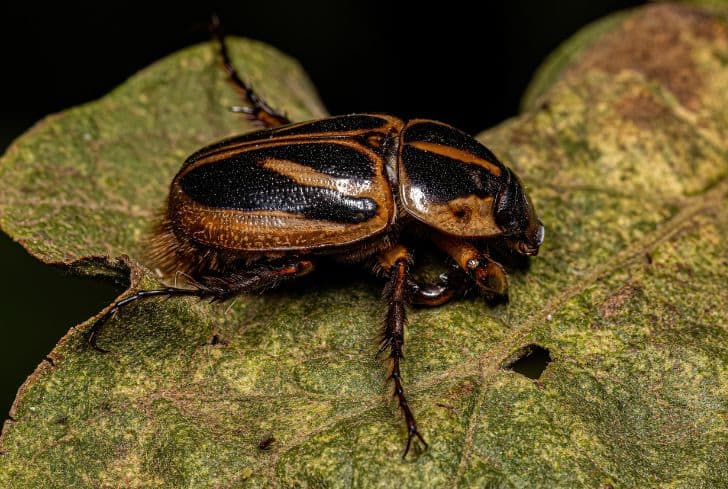
The pleasing fungus beetle doesn’t only have a long name but also a weird one.
The beetles could just be called fungus beetles, but they’ve done their best to please people, at least entomologists, to earn an extra name. They have pleasingly shiny black colored forewings with yellow or orange irregular patterns.
However, among Asians, these beetles ruin the name as they are fond of munching on gourmet fungi, which is highly valued in most Asian delicacies.
While the pleasing fungus beetles are common in rotting trees and downed logs, you’ll rarely see them as they’re nocturnal.
4. Madagascar Hissing Cockroach (Gromphadorhina portentosa)
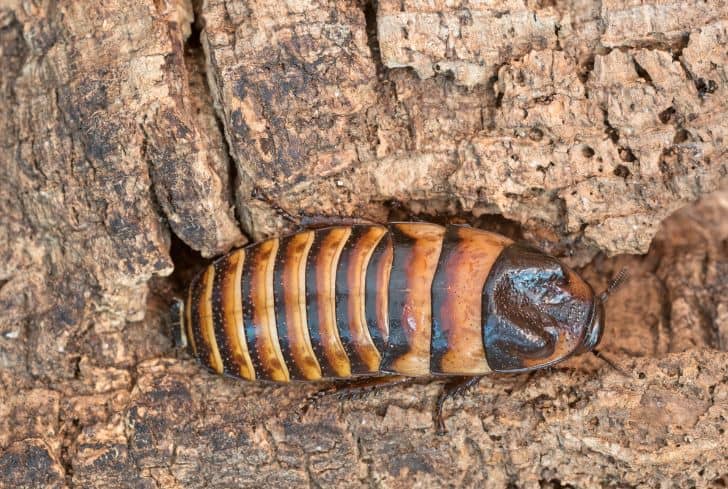
The Madagascar hissing cockroaches are beautiful and one of the largest cockroach species, with adults growing as long as 7.5 centimeters.
The name of these roaches is so long it exceeds its scientific name; Gromphadorhina portentosa.
The insects get the hissing word in their long name from the hissing sound they make. While they hiss as a form of communication, the insects make the loudest noises when fighting. They also hiss as part of their mating rituals.
And as you’d guess, the cockroaches get their first word in their name from their native country, Madagascar.
5. The Eastern Diamondback Rattlesnake (Crotalus adamanteus)
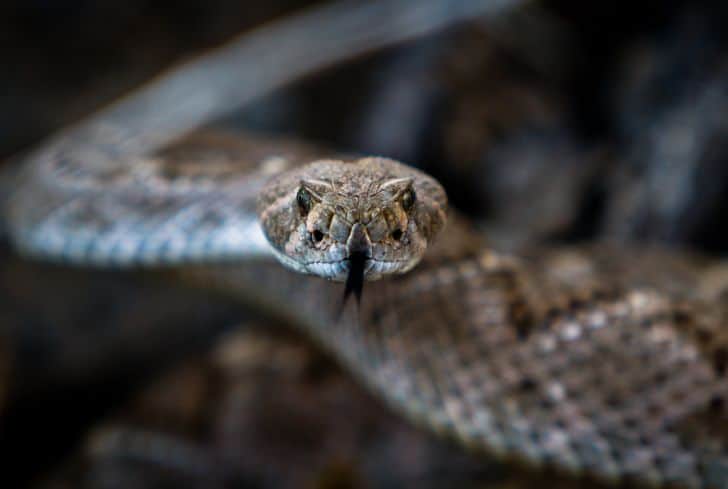
The eastern diamondback rattlesnake is a highly venomous and heavily bodied snake from the viper family, endemic to the Southeastern United States. Growing up to about 8 feet long, it’s the largest rattlesnake.
True to their names, the rattles sport patterns of light-centered and yellow-centered black diamonds on their backs. But when light reflects off the snakes, the shiny scales turn dull. The designs also make the snakes the most vivid reptiles across North America.
And while these rattlesnakes are deadly, they are not aggressive unless threatened. In fact, they avoid human contact, but when cornered, they deliver painful and fatal bites. The good news is you can find their antivenin throughout the snakes’ range.
6. Western Diamondback Rattlesnake (Crotalus atrox)
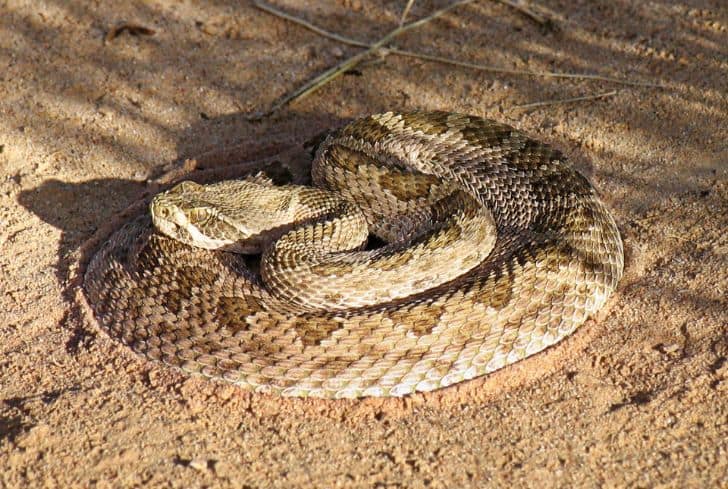
The western diamondback rattlesnake belongs to the viper family as its eastern counterpart. That’s why it’s venomous and has the distinctive diamond-shaped blotches on its back, as its name implies.
But this species is relatively small, growing up to about 7 feet. And while it shares similar habitats with its fellow rattlesnake, the western diamondback rattlesnake ranges span western parts of the United States from central California to Central Arkansas and Mexico.
7. Canadian Swallowtail Tiger Butterfly (Papilio canadensis)

The Canadian swallowtail tiger butterfly is a medium-sized to large butterfly native to North America. It lives in the Adirondack Mountains during early summer and late spring.
As one of the most decorated butterflies, the adults are yellow, with the upper side forewing sporting broad black stripes. The hindwing has soft blue to orange patches of scales.
The butterfly gets its name from the extension near the bottom of its hind wing. When you pay close attention, this extension looks like the long, forked tail of a passerine bird called a swallow.
8. Black-crowned Central American Squirrel Monkey (Saimiri oerstedii)

The black-crowned Central American squirrel monkey is a small, slender
primate with a long tail. The primates are native to Central America, particularly Costa Rica and Panama, where they inhabit areas near the Pacific coast.
And with five words in it, the monkey has the longest name in the world.
The primates belong to a species of New World Monkeys called squirrel monkeys, from where they get the last two words of their name. Furthermore, the monkeys display incredible climbing skills typical of squirrels.
The black hair covering the crown of the animal further explains the reason behind the naming of this unique primate. The black crown also helps distinguish the primate from its close relative, the American squirrel monkey.
Unfortunately, the monkeys are endangered according to the IUCN Red List.
9. Crowned Slaty Flycatcher (Griseotyrannus aurantioatrocristatus)

The crowned slaty flycatcher is a medium-sized migratory bird found in the subtropical and tropical dry forests of South-Eastern and South-Central Amazonia. But you can also catch the flycatchers in central and western Amazon basins during the austral winter, where it mostly migrates into.
These slaty flycatchers are typically gray or brown, although some individuals, especially males, have yellow or orange underparts. But they all adorn black or dark crowns, which suggests the source of their name.
What’s more, the slaty flycatchers have one of the longest scientific names given to any animal, with 15 syllables when you pronounce it loudly.
10. Southern Titiwangsa Bent-toed Gecko (Cyrtodactylus australotitiwangsaensis)

The Southern Titiwangsa bent-toed gecko is one of the most beautiful reptiles, thanks to its dark bands crossing the body from the neck to the tail tip.
The reptile is native to the upland areas of southern regions of the Titiwangsa Mountains of Malaysia. It’s this mountain range the gecko is named after.
The beautiful gecko also derives its name from the unique nature of its toes. While they are not bent, as the name implies, they’re slender and curved, unlike in other geckoes where the toes have dilated digits.
11. Southeast Asian Soldier Fly (Parastratiosphecomyia stratiosphecomyioides)
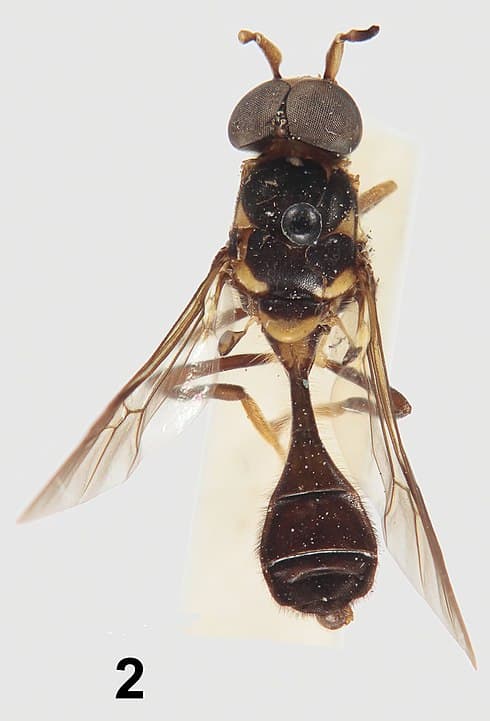
The southeast Asian soldier fly belongs to the soldier fly family, which has more than 2,500 species worldwide. The Asian species is endemic to the Malaysian peninsula, living in diversified habitats, including rural and urban areas.
From the surface, you might question the reason behind the word soldier in the insects under the soldier fly family because the flies are sluggish and are attracted to flowers – which are not traits of soldiers you know.
However, the flies have stripes across the abdomen, reminiscent of soldiers’ uniforms. And interestingly, Asian soldier flies have two spines from the back of their thorax, which stand out to imply the weapons’ of the soldiers. But whether the spines live true to their name is yet to be known.
And according to the Guinness world records, the flies also take the top spot for animals with the longest scientific binomial name.
12. Satanic Leaf-tailed Gecko (Uroplatus phantasticus)

The satanic leaf-tailed gecko is a small gecko endemic to the island of Madagascar, living exclusively in forests.
But why name the poor gecko after Satan?
Well, the reptile has strange, unsettling features. It sports long spines on the body and trunk, but the ones over its eyes make it look like a little devil, at least according to devil images we draw from fiction. And as mysterious as Satan, the Satanic leaf-tailed gecko can take any color it wishes among yellow, orange, purple, and tan.
However, the leaf-tailed part is more elaborate, as the geckoes have flattened tails with notches that look like decaying leaves.
But, the mysterious appearance of the gecko is vital for its survival as it has the luxury of mimicking most environments and positioning itself as a dead leaf to fool prey.
13. Hummingbird Hawk-moth (Macroglossum stellatarum)
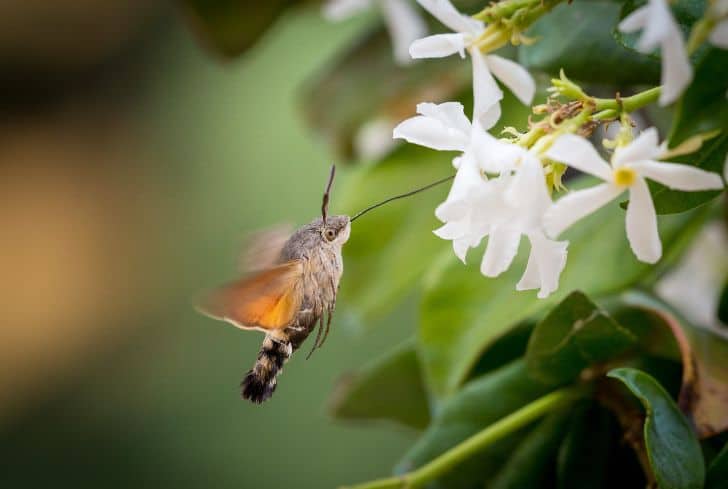
The Hummingbird hawk-moth is a small, day-flying moth that ranges from the Mediterranean region to far east Japan. It migrates from Southern Europe to the UK every summer and is often spotted hovering midair over flowers.
The moth gets its name from two birds, a hummingbird, and a hawk, although it resembles the former by large margins.
To earn its comparisons with hummingbirds, the moth has a long proboscis that mimics the long beaks of the smaller birds. The moths use these unique features, like the birds, for feeding, as it sucks nectar from flowers. It also moves its wings incredibly fast to produce a humming sound, synonymous with hummingbirds.
The only way the moth resembles a hawk is its flying style, spreading its wings out to appear like the predator bird.
14. Bone-eating Snot-flower Worm (Osedax mucofloris)

The Bone-eating snot-flower worms are tiny, usually as little as your small finger. They often wrap themselves in the bones of whale carcasses.
The flower part of these tiny creatures’ name alludes to their appearance, as their heads have protruding feathery tendrils.
But the fascinating part is how the tiny worms got their bone-eating name because as little as they’re, they lack mouths, stomachs, and anus and must eat to save their lives.
So how do they do it?
Well, the worms don’t crush the bones, but they attach themselves to the bones and rely on symbiotic bacteria to digest the fats and lipids to get the nutrients. That’s according to deep-sea scientists, as the Guardian reported.
15. Pennsylvania Wood Cockroach (Parcoblatta pensylvanica)
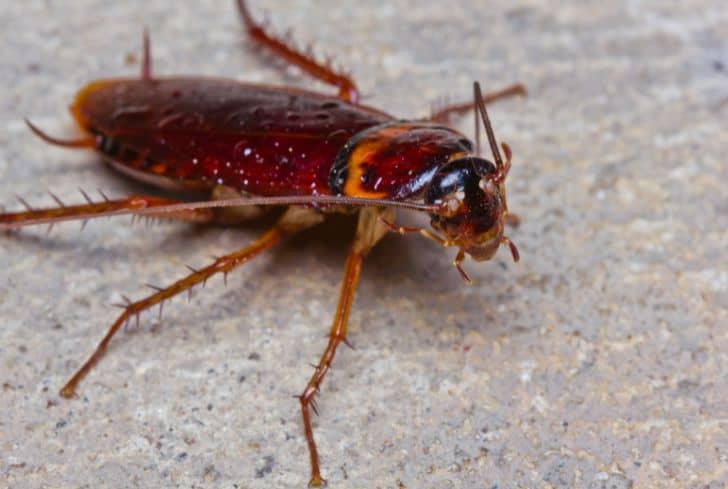
The Pennsylvania wood cockroach is common in southern, eastern, and midwestern US states.
Living to their name, the insects typically live in wooded areas where they feed on decaying matter. They have historically disliked the idea of moving indoors, unlike most of their relatives.
But with the continuous use of firewood and the construction of wooden houses, the cockroaches find life
indoors appealing. And if not controlled, they become a nuisance, especially during mating season.
16. Sarcastic Fringehead (Neoclinus blanchardi)

The Sarcastic Fringehead is a small, hardy, aggressive saltwater fish with a ridiculously huge, colorful mouth. It’s found off the California coast and in Baja.
The fringehead is a fascinating fish, thanks to its mouth. In fact, that’s how the crustacean got its sarcastic name.
You might be wondering, how on earth just a big colorful mouth can be sarcastic. Well, the sarcasm lies in the way the fish use their mouth.
When fighting, especially over mates, males open and prolong their mouths to establish dominance. But sarcastically, the quarreling fish don’t do anything past opening their mouths. They never touch each other or even produce a scary sound. But, surprisingly, the smaller individual surrenders and flees the scene without putting up a fight. Sarcastic enough? Well, that’s so, according to ichthyologists who named the strange fish.
17. Fried Egg Jellyfish (Phacellophora camtschatica)

Seemingly, we’re rounding off the list with animals with not only long names but also strange and fascinating ones.
The strange-looking Fried Egg Jellyfish is a large, round-shaped fish with a diameter close to 60 centimeters. It’s found in temperate waters worldwide.
While it doesn’t look like a fish, the Fried Egg Jellyfish has a distinctive yellow coloration in the center of its body (dome) which looks like an egg yolk. Furthermore, the fish have a whitish ring surrounding the dome. That’s why ichthyologists didn’t struggle to find a common name for the fish.




![Coyote vs Wolf [Differences & Strength Comparison]](https://eartheclipse.com/wp-content/uploads/2022/08/Coyote-vs-wolf.jpg)

